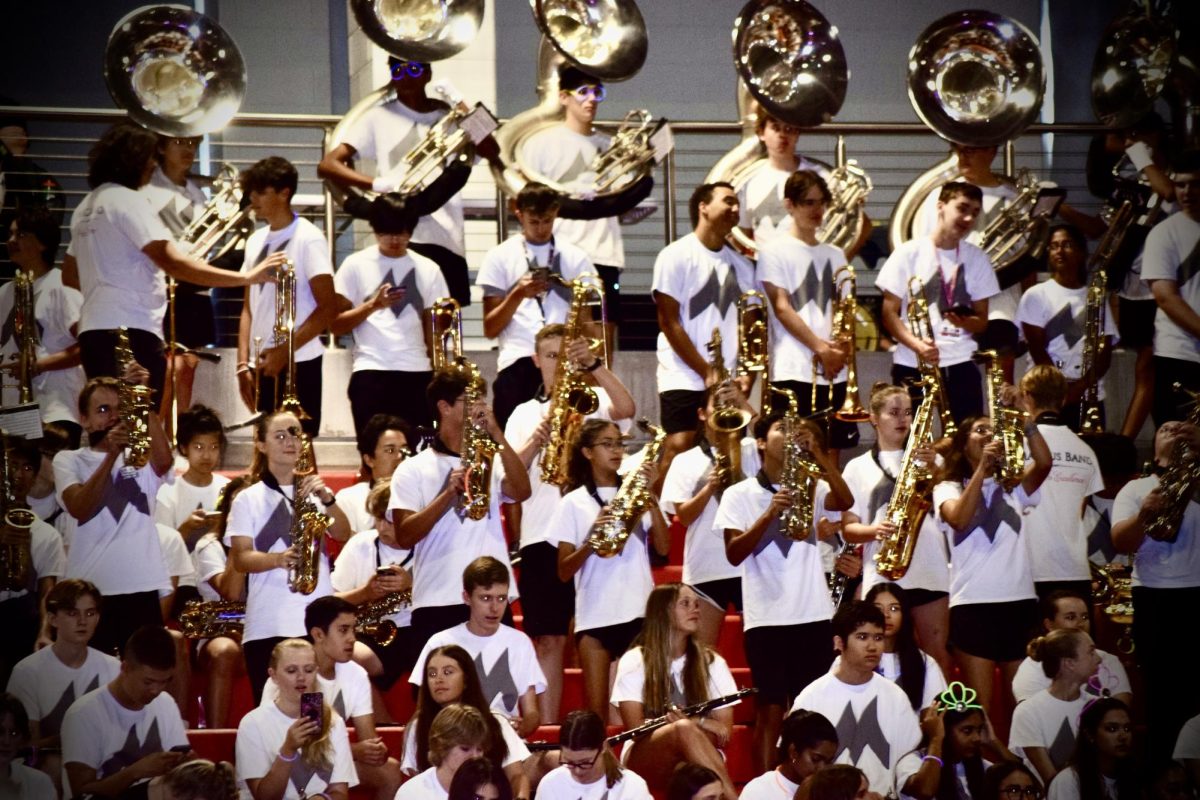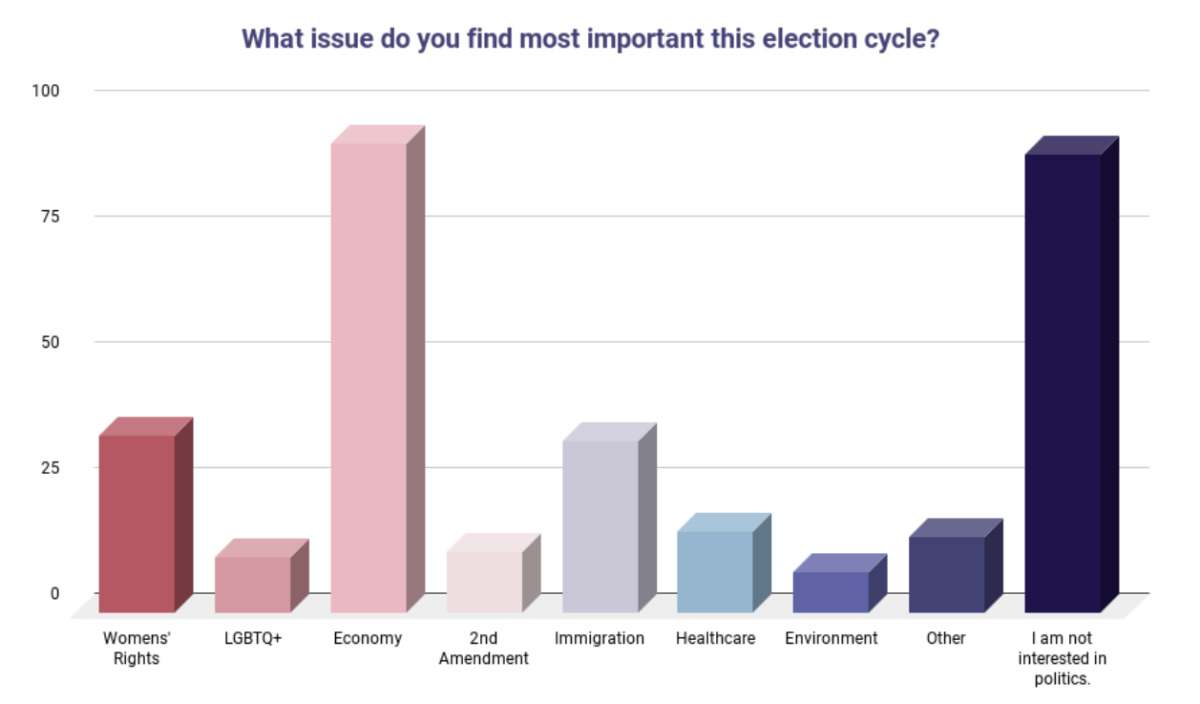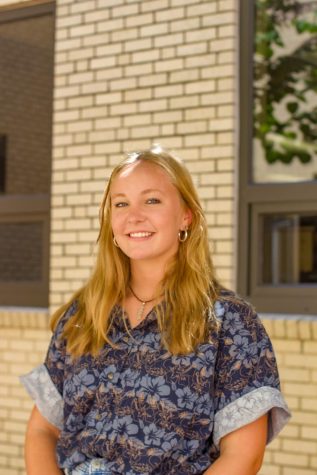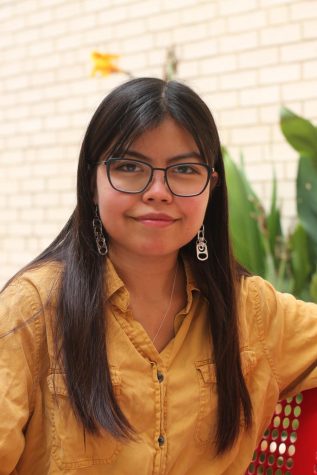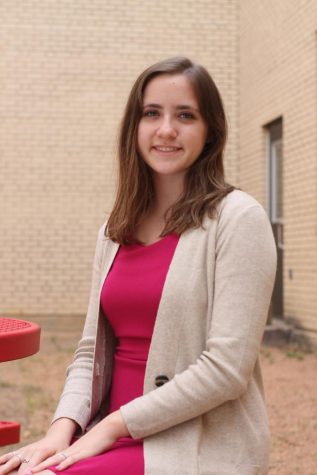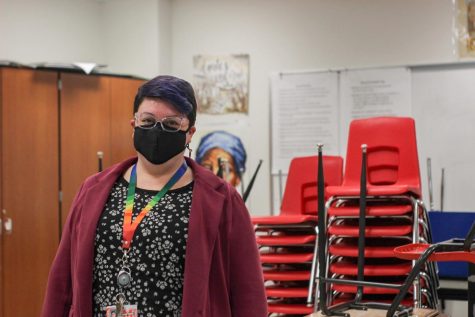
English teacher Ashley Gandy has taught classes full of students for the last 14 years. However, this year she sees an empty classroom as she gets ready for her day. The desks are stacked and pushed to the front of the room, and the students are at home in their pajamas.
This year she only teaches virtual classes, an option offered by LISD to students because of the pandemic.
“They’re trying to do as much as they can to mitigate the risk and keep everyone as safe as possible,” Gandy said.
Many students, including junior Mina Basharkah, opted to stay at home rather than come back to school in person due to the health risks of face-to-face learning.
“We have my grandmother living with us, so if one of us does get it, it’s not going to pass us,” Basharkah said. “It would affect our family.”
Basharkah said that learning virtually has been a positive experience for her because it offers her flexibility for how to spend her time.
“I personally feel really comfortable with virtual,” Basharkah said. “I can work at my own pace and really work on what I need to work on.”
Even though this year is not what anyone expected, the integration of virtual has familiarized teachers and students with many resources, including Canvas, Webex and Edgenuity. This has allowed students and teachers to stay connected, even when they are physically apart.
“I have more familiarity with what Canvas can do,” Gandy said. “I will probably use more virtual assignments in the future.”
While the virtual classes cover the same information, many students have to keep their cameras off and their microphones muted because of technical issues. Gandy believes this makes it a lot more difficult to establish a bond with her students.
“There isn’t a real relationship,” Gandy said. “Now I pretty much know them by their last names.”
According to Gandy, without a relationship between teacher and student, it is difficult to identify students who need additional support. In a virtual classroom, students who need help cannot easily raise their hand to get the teacher’s attention. Gandy believes that the key to success in virtual learning is for students to speak up for extra help and to carefully manage time. With Edgenuity, most of the curriculum is set rather than written by the teachers.
“I don’t have much power to tweak anything,” Gandy said. “So that falls on the students reaching out if they need it.”
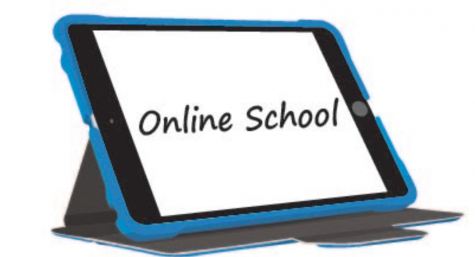
Basharkah handles this responsibility by contacting her teachers when she needs help. She believes that this has improved their communication, as she can easily get a response on her own time rather than staying after school or coming in early.
“When I have a question, I just email my teachers,” Basharkah said. “They’re really adamant about answering them.”
Basharkah set up a designated school area in her home. She does her meetings and schoolwork in one room and her homework in another. Basharkah believes that the key to success is sticking to a routine.
“I feel like I have some separation in my life,” Basharkah said. “I really make sure that I am completing all of my assignments on time.”
Despite the present disadvantages of the isolation due to the pandemic, this year is a learning experience for everyone, as it is helping students expand their knowledge on virtual online learning for years to come. Basharkah said that the few sacrifices she and her family have made to stay safe during the pandemic have been worth it, and that she has gotten the opportunity to grow closer to both her family and her friends.
“By being open to giving up a few things, you can actually gain a lot,” Basharkah said.








